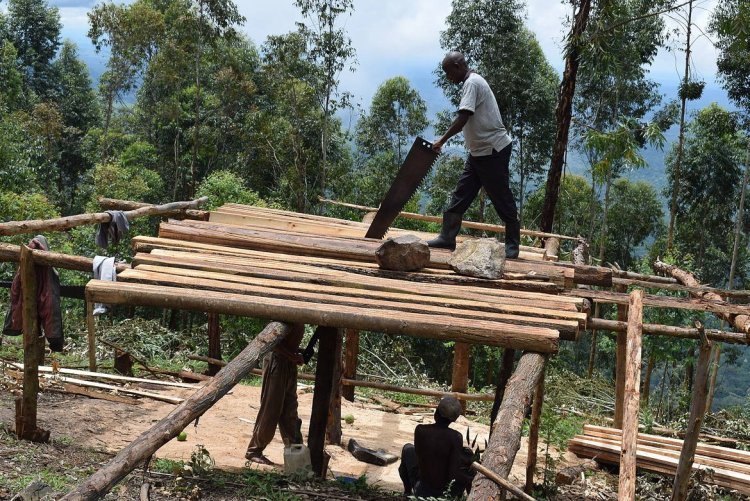From Conflict to Conservation: How a Community Transformed Karinzu Forest Reserve

Once a hotspot for illegal logging and forest encroachment, the Karinzu Forest Reserve has seen a remarkable transformation, thanks to the collaborative efforts of local residents and international conservation organizations.
Zinori Bikorwomuhangi, 38, a native of the area, recalls how he began encroaching on the forest at the age of 13 to earn a living.
"It was a matter of life and death," Bikorwomuhangi says, highlighting the desperate circumstances that drove locals to harvest timber illegally.
The residents believed that the forest was a God-given resource, theirs to utilize without restrictions.
However, constant clashes with the National Forestry Authority (NFA) led to frequent arrests, creating a climate of tension and hostility. In 2008, Bikorwomuhangi and 44 other persistent encroachers formed a group to bail each other out whenever they were apprehended by the NFA.
"Our survival depended on the forest, but the risk of arrest was always looming," Bikorwomuhangi explains.
To evade law enforcement, they resorted to cutting timber at night using solar systems and pressure lanterns, a dangerous endeavor that resulted in injuries and even fatalities among the group members.
A turning point came in 2012 when the World Wide Fund for Nature (WWF) intervened. They proposed that the group register with the government and form a Collaborative Forest Management (CFM) group.
This would allow them to work alongside the NFA and benefit from the forest legally. The idea was to shift from illegal activities to sustainable conservation practices.
By 2013, the 45 members from the Ndangara and Nyakiyanja parishes officially registered the CFM group, Ndangara and Nyakiyanja Tutungukye Parishes Group (NNTG), aimed at 'empowering communities for conservation and development'. Since then, the group has grown to 415 members and has made significant strides in conservation and community development.
Tree Planting Initiative
The NNTG has been allocated 615 hectares of land by the NFA, 600 of which have been planted with both eucalyptus and indigenous trees.
By June 2018, they had planted over 458,600 tree seedlings, with an additional 100,000 planted since then. The group plans to cover the remaining 15 hectares before the year ends.
"Our efforts have led to the protection of the natural forest of Karinzu," says Innocent Byamukama, the group coordinator.
The community now conducts patrols to prevent illegal activities, and forest management has shifted from the NFA to the locals, who arrest encroachers and hand them over to the authorities.
The group's efforts have also led to economic benefits. 380 members are involved in carbon trade, earning a total of UGX 270 million from this venture.
Additionally, they have 483 bee hives, producing 6,000 kilograms of honey annually. Half of the proceeds from honey sales go to the caretakers, while the rest supports group activities. The group also processes bee combs into wax for additional income.
Coffee Growing and Value Addition
To further diversify their income, the NNTG members grow coffee. They have purchased 10 wet coffee pulping machines for value addition and produce 15-20 tonnes of coffee annually.
This venture has significantly improved their livelihoods, with plans to expand further.
Improving Livelihoods
The impact of these activities is evident in the community. Before the intervention, 70% of the community lived in grass-thatched houses.
Now, all homes have iron roofs, and some even have chicken houses. Savings and credit services have grown from UGX 4 million in 2014 to UGX 162 million, with members accessing loans for further development.
Renewable Energy
The group has also focused on renewable energy, constructing 380 energy-saving stoves and providing solar lighting to reduce health hazards and costs.
This has led to improved living conditions and reduced dependency on traditional fuel sources.
Environmental Restoration
Reforestation efforts have improved local weather conditions, with rains returning year-round and fog visible on reforested hills. This indicates a positive environmental shift, reversing the effects of previous deforestation.

































